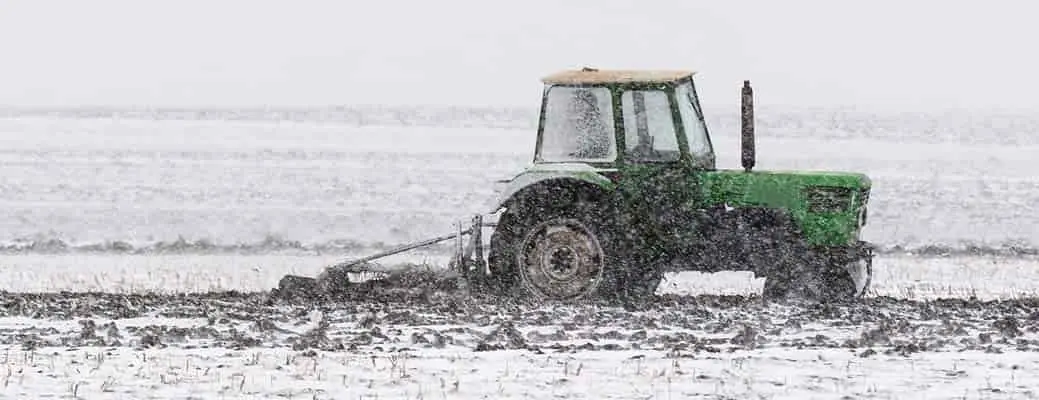How to Winterize Your Farm Equipment


Whether your winter includes freezing temperatures or just a period of lower activity on your farm or ranch, it’s a good time to check your machinery. Here’s how to winterize your farm equipment so it’s ready for you come spring.
The first thing you should do as you finish fall harvest is take some time to check your equipment and make a list of repairs to make in the next few months. Winter is typically not as hectic as spring, so doing these now helps ensure that you get off to a good start next year — it also helps prevent rust and keeps the damage from getting worse while the equipment isn’t in use.
After checking your machinery for repairs, clean the equipment inside and out. If you’re using a pressure washer, be careful not to make direct contact with a seal, as it could cause damage. Clear leftover grain to keep mice away from your equipment. Lubricate moving parts and loosen belts to reduce tension and elongate their lifespans.
Post-harvest is also a good time to do regular maintenance, such as oil changes and tire checks.
Top off your fuel and hydraulic tanks to prevent condensation from entering the tanks when the weather starts to warm back up. Store diesel exhaust fuel in its original container over the winter.
Store machinery inside when you can and cover equipment that stays outside. Be extra careful to protect any computerized parts. Once you have the piece of equipment in its long-term parking spot, disconnect the battery to prevent leaks.
To help keep tires in top condition, park on blocks to keep them off of the cold, moist ground.
If you have diesel equipment and live in a cold climate, switch to #1 diesel. Your dealer will change the blend when it gets cold, and you might have issues with fuel gelling if you still have #2 in your tanks.
Keep your equipment batteries fully charged to combat the effects of cold weather. If it gets cold where you live, make sure the fluid (such as your coolant) will work for the colder temperatures.
End of harvest and the beginning of winter is a great time to clean out your barns and sheds, including inventorying and checking expiration dates on things like pesticides and chemicals. If you have non-electric heat in any buildings, you should also verify that the carbon monoxide alarms are working to ensure you can safely heat the building.
Make sure your livestock buildings are ready to shelter animals during cold weather, including plugging up holes that are causing drafts and confirming the buildings have proper ventilation. Stock up on food and bedding, verify that your solution to frozen water tanks is functional, and double check that all your livestock is healthy and up-to-date with vaccinations.
Winter is also a great time to reevaluate your farm succession plans. It’s crucial that you have a plan in place for the future of your operation, and this intensive effort is not something that you want to handle during the rest of the year when you’re actively planting, harvesting and managing livestock.
Planning and preparation are important to maintaining your agriculture operation, but you can’t rule out the unexpected. If winter weather has you concerned or you feel uneasy about the coverage you currently have on your farm or ranch, contact your local Farm Bureau agent to ensure your future is protected.